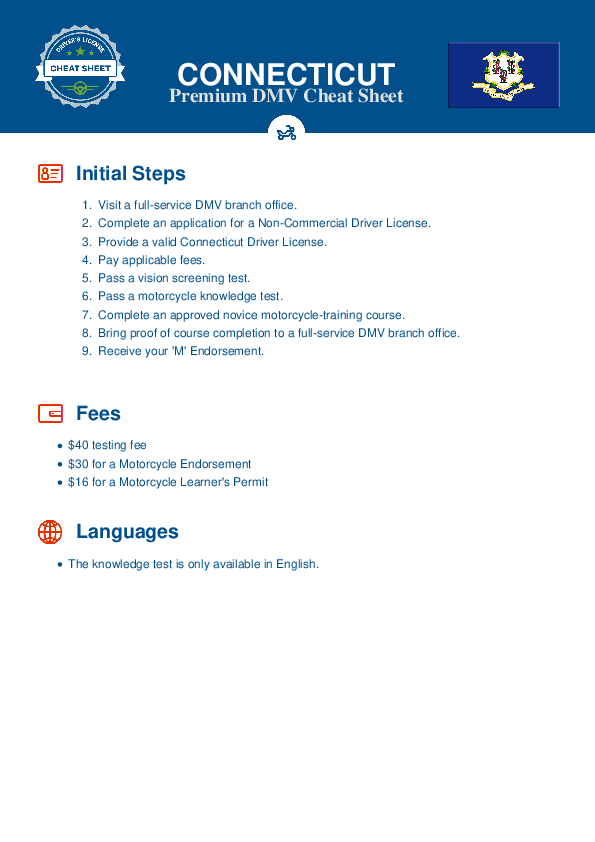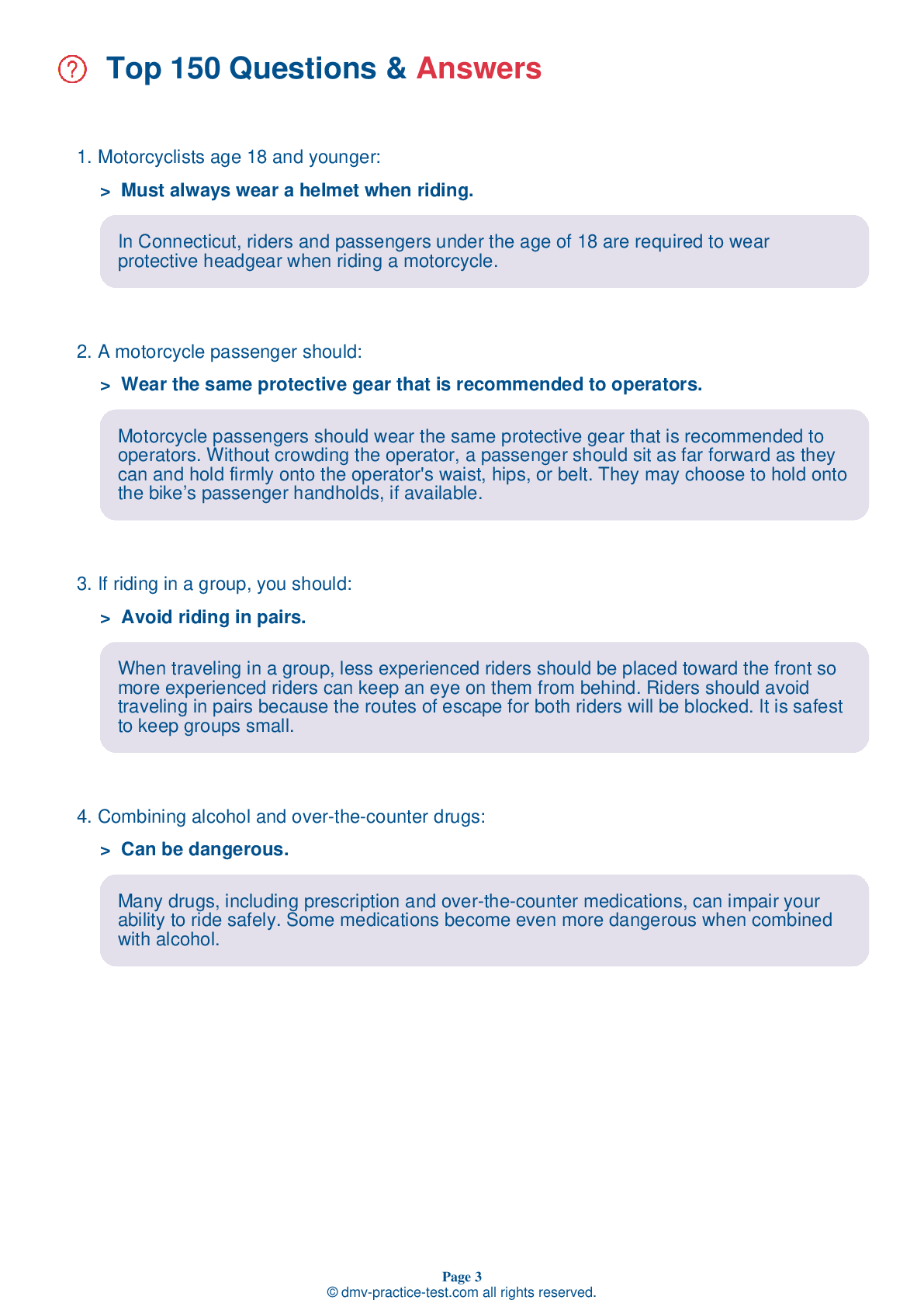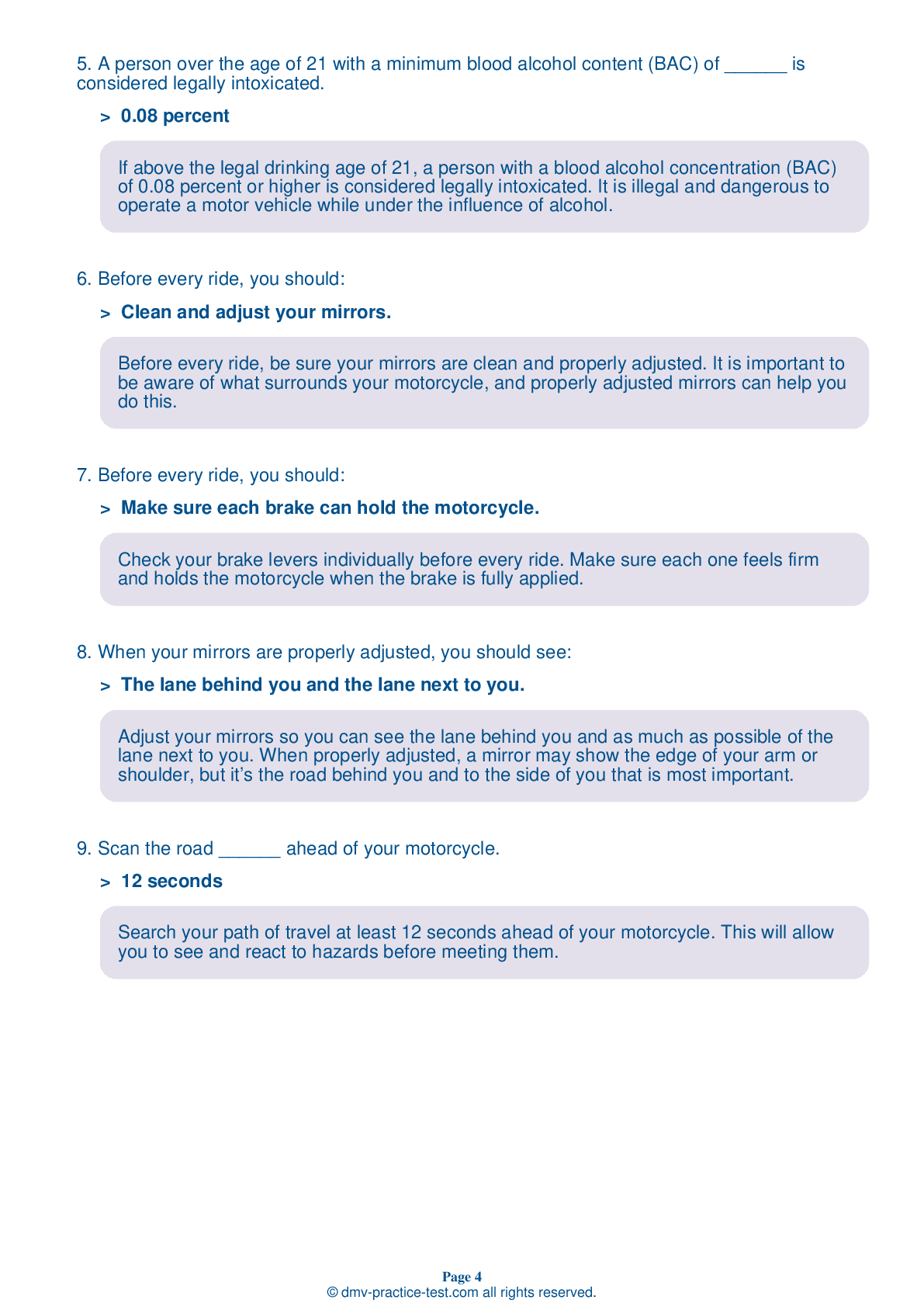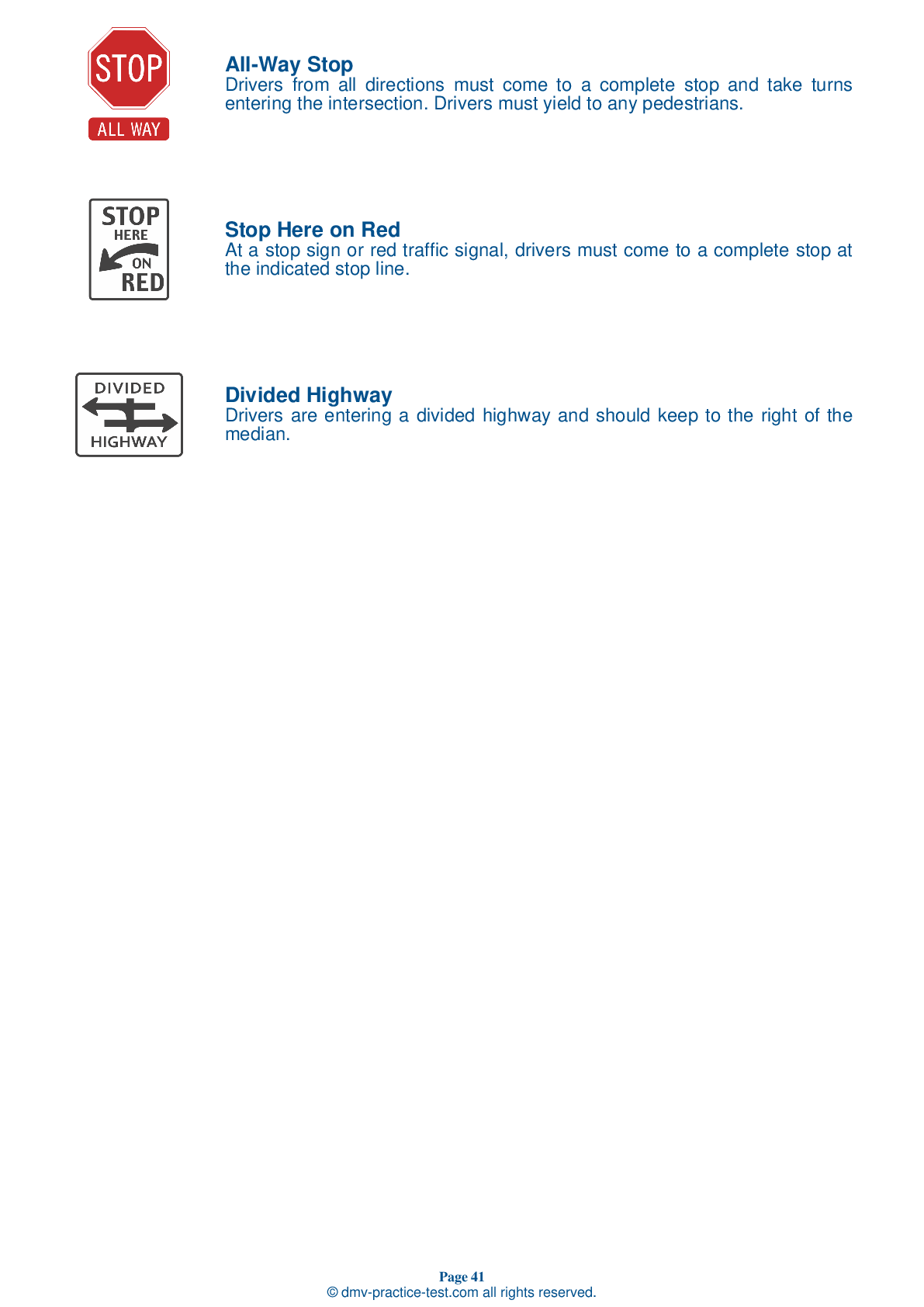Motorcycle Test | License CT 2025 | FREE Online Practice! #14
Take this FREE motorcycle test (license in CT 2025) to check your knowledge of the road rules. To improve your results, download a motorcycle handbook online, study theory, and practice for free on our website. Still worried about how to get a motorcycle license in Connecticut in 2025? Check our website for more sample tests, train as much as possible, and boost your grades!
1 . The rear brake:
Use both brakes every time you slow or stop your motorcycle.
2 . In general, when riding at night, your headlight should:
Using your high beam headlight will help you see and will help other drivers see you. Use your high beam headlight any time you are not riding behind or approaching other vehicles.
3 . Carrying a passenger:
The added weight of a passenger or cargo to a motorcycle changes the way the motorcycle handles, balances, speeds up, and slows down.
4 . A motorcycle passenger should:
Motorcycle passengers should wear the same protective gear that is recommended to operators. Without crowding the operator, a passenger should sit as far forward as they can and hold firmly onto the operator's waist, hips, or belt. They may choose to hold onto the bike’s passenger handholds, if available.
5 . When the road is slippery, maintain a following distance of at least:
An expanded cushion of space is needed if your motorcycle will take longer than normal to stop. If the pavement is slippery, if you cannot see through the vehicle ahead of you, or if traffic is heavy and another driver may try to squeeze in front of you, open up to a minimum three-second following distance.
See the exact questions that will be on the 2025 Connecticut DMV exam.
99.2% of people who use the cheat sheet pass the FIRST TIME
Jeneen was tired of paying $5/gallon. She got herself a scooter that required the motorcycle license. She studyed the motorcycle test cheat sheet and passed her test the next day!
Christopher tells us how he knew nothing prior to obtaining the motorcycle study guide, and he only got one question wrong because he clicked on the wrong answer by mistake.



